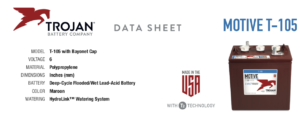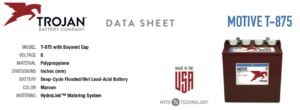When you have a relatively large yard, you need an equally efficient lawnmower. Many people invest in a riding mower or similar model to get the job done. That top-of-the-line tool isn’t going to travel too far without the proper lawn mower batteries. Learn all about the details that go into making a garden battery. You’ll feel like an expert during your next purchase.
1. Sizing the Power Source
Access the riding lawn mower battery under the seat, and you’ll realize that there’s not much wiggle room. The proper battery will fit right into the manufacturer’s original housing. To make your decision easier, consult with the manufacturer’s instructions for your particular lawn tractor. It will often have suggestions that narrow down your choices.
A clever way to size the next battery is by taking the old one with you during a shopping excursion. Match the size at the store, or even ask the front-counter person about a similar model. Our Northeast Battery team can help you with installation tips, for example.
2. Verifying the Voltage Level
Advance Auto Parts reminds their readers that lawn mower batteries are normally rated at 12 volts. This rating may seem low, but it’s really all the power that garden tractors require. Avoid the addition of a battery with extra voltage. It won’t help the circuitry or power the mower for a long period of time. In fact, excessive power will only damage the electrical system.
Each battery should have a clear label that indicates the voltage level. It often says lawn and garden on the battery too. Use this information as you select the proper power source for your tool.
3. Examining the Cold-Cranking Amps
When it comes to powering up your engine, the current coursing through the lawn mower battery is crucial to success. Shop around for the CCA or cold-cranking amps value advertised on every battery. This value should match the mower’s specifications regarding the electrical systems.
Ideally, look for a CCA that meets or exceeds the manufacturer’s specs. You’ll be able to turn over the engine without hesitation.
Avoid CCAs that are too low for your tool. The battery might work as a temporary measure, but it will decline at a rapid pace. It makes more sense to pay a bit extra for the proper CCA rating.
4. Understanding Terminal Positioning
You might be accustomed to automotive batteries that have fixed terminals regardless of the style. Mower batteries are different, however. Look for a Group U1L battery when your positive or red terminal is in the left-hand corner. In contrast, Group U1R batteries locate the terminal on the right-hand side.
Their positions aren’t important for the lawn mower battery charger, but they are critical for connections into the electrical systems. You want the wires extending from the battery and into the mower to be relaxed. Don’t stretch them to fit an improper battery. Electrical problems will plague the mower.
5. Getting Ahead With Extra Batteries
A riding lawn mower battery should have enough power to take on the average yard. However, battery age and large properties can add up to a lack of power. Select proper replacement batteries by buying more than one at a time.
Purchase a pair of batteries so that you always have extra power in case of power loss, suggests Popular Mechanics. Swap the batteries in and out of the tool so that a lawn mower battery charger can do its work. If you ever encounter a dead battery, you have the necessary power to finish the job.
For all of your lawn and garden questions, contact Northeast Battery today. From cranking amps to voltage levels, these specifications can be simplified with just a quick discussion about your lawn mower battery. Trim the grass in record time so that you can relax this summer. The right battery will prove to be a reliable tool in the yard.





Northeast Battery, a Stored Energy Holdings, Inc. Company